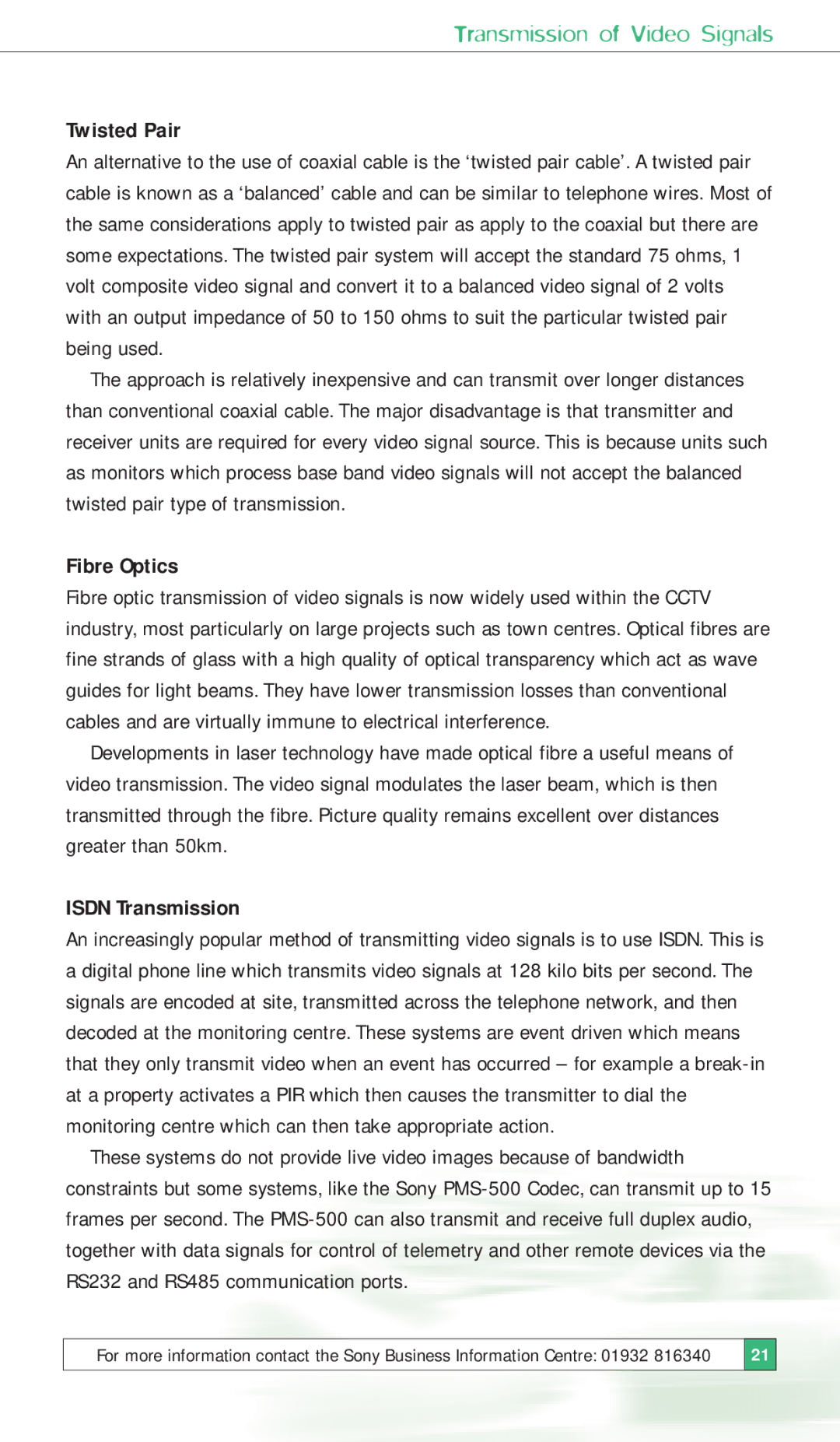
Transmission of Video Signals
Twisted Pair
An alternative to the use of coaxial cable is the ‘twisted pair cable’. A twisted pair cable is known as a ‘balanced’ cable and can be similar to telephone wires. Most of the same considerations apply to twisted pair as apply to the coaxial but there are some expectations. The twisted pair system will accept the standard 75 ohms, 1 volt composite video signal and convert it to a balanced video signal of 2 volts with an output impedance of 50 to 150 ohms to suit the particular twisted pair being used.
The approach is relatively inexpensive and can transmit over longer distances than conventional coaxial cable. The major disadvantage is that transmitter and receiver units are required for every video signal source. This is because units such as monitors which process base band video signals will not accept the balanced twisted pair type of transmission.
Fibre Optics
Fibre optic transmission of video signals is now widely used within the CCTV industry, most particularly on large projects such as town centres. Optical fibres are fine strands of glass with a high quality of optical transparency which act as wave guides for light beams. They have lower transmission losses than conventional cables and are virtually immune to electrical interference.
Developments in laser technology have made optical fibre a useful means of video transmission. The video signal modulates the laser beam, which is then transmitted through the fibre. Picture quality remains excellent over distances greater than 50km.
ISDN Transmission
An increasingly popular method of transmitting video signals is to use ISDN. This is a digital phone line which transmits video signals at 128 kilo bits per second. The signals are encoded at site, transmitted across the telephone network, and then decoded at the monitoring centre. These systems are event driven which means that they only transmit video when an event has occurred – for example a
These systems do not provide live video images because of bandwidth constraints but some systems, like the Sony
For more information contact the Sony Business Information Centre: 01932 816340
21
